This is a comparison review of two of Minolta’s last film SLRs, separated by only 3 years and aimed, for the most part at the same audience. These were fully featured SLRs with good photographer-oriented specifications, but built to a budget. They are the Dynax 5 & Dynax 60 (aka α-5 & α-70 / Maxxum 5 & Maxxum 70)
What defines these budget cameras from Minolta?
Minolta seems to have gone through a major design change after the 7, with all of their subsequent film SLRs offering variants on the body layout of 2001’s Dynax 5.
So what did you get back in 2001-2004 with this level of camera that made them different from the ‘prosumer’ 7 of 2000?
- Polycarbonate body
- Single control dial
- Scene modes instead of memory presets
- Options controlled via a multi-selection dial rather than dedicated controls
- A pentamirror viewfinder
- No vertical grip options
- Fewer custom functions (14 against 35)
- No 1/8000 sec shutter speed setting
- No external flash synch socket
What you retain are full exposure mode choices, including an optional ‘shift’ mode on the programme mode, depth of field preview, a decent number of focusing points (with the centre as a ‘cross’), continuous shooting at up to 3 frames per second, a metal faced mount (although the bayonet tabs are made from a plastic), remote flash control and the ability to autofocus any Minolta (or Sony) A-mount lens ever made.
The budget Minoltas are photographer’s cameras – designed to be used rather than cosseted. They are easily capable of taking photographs that are just as high quality as the pro-grade 9 or the super-advanced 7 – but mostly they are affordable and because their economy of build makes them somewhat less than precious a photographer may feel happier risking them in order to catch a particular shot.
The Minolta Dynax 5
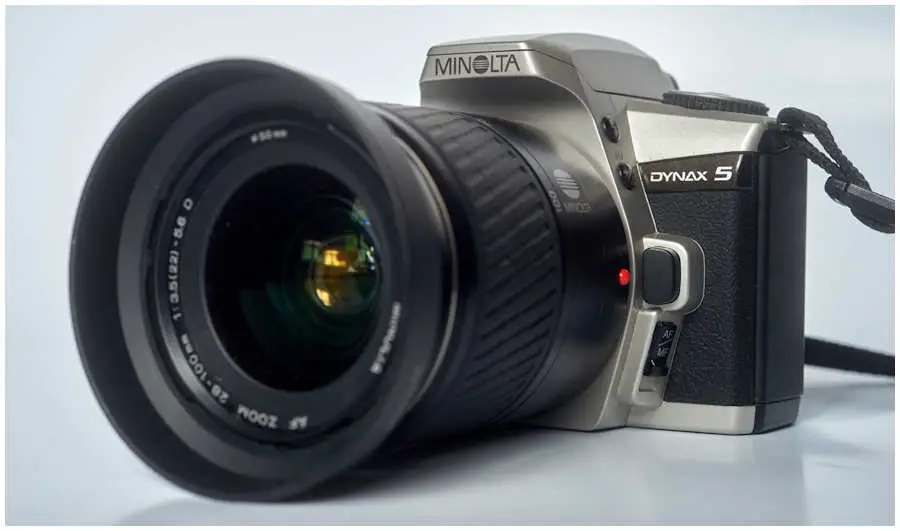
The Minolta Dynax 5 was the third model of the single-digit series and introduced a number of economies and design changes that affected all Minolta’s subsequent film SLRs. It was released the year after the 7, in 2001. Noticeable amongst the economies was the return of push-button-and-move-dial settings in comparison to the dedicated dials and switches of the 9 and 7. Much of the control heavy lifting is taken on by the left-mounted function dial, which allows you to select one of a number of functions off the dial and then change them by pressing a button and moving the control dial.
The single control dial is mounted vertically flush on the front face of the camera, which must have simplified the sealing of the wheel in comparison to one that sits in a slot in the body. The Minolta Dynax 5 top-plate is polycarbonate in a satin chrome finish and the grip is less substantial than seen previously. The camera still has 14 custom settings available, but these need to be set using code numbers as the top-mounted LCD has insufficient real-estate to show full-text explanations, so you need to refer back to the manual (available online). The safety lock on the rear door is still there, but the 5 introduced the innovation of opening the rear with a hinge on the left, with the latch being over on the right.
In comparison with the 7 the 5 has:
Two fewer focus points in the viewfinder, with the central one only being a cross, rather than double cross; No DMF or STF function, No AF assist light, fewer custom functions (14 against 35), a slightly narrower metering range (only down to 4 rather than 3), Programme modes rather than customizable presets, exposure compensation is ½ stops rather than the choice of ½ or ⅓ stops, no rear synch flash mode, a lower flash synch (1/125 against 1/200) and no studio flash socket. The viewfinder is a pentamirror with 90% coverage, has less eye relief and fewer dioptre options, a lower frame rate (3fps vs 4 fps), a top shutter speed of 1/4000 , no 2 sec option on the self timer and no vertical grip (although you could get a battery pack that allowed use of AA batteries). All-in-all, even though the 7 and the 5 were quite clearly differentiated, the 5 was still a very capable camera that was unlikely to hold an enthusiastic photographer back.
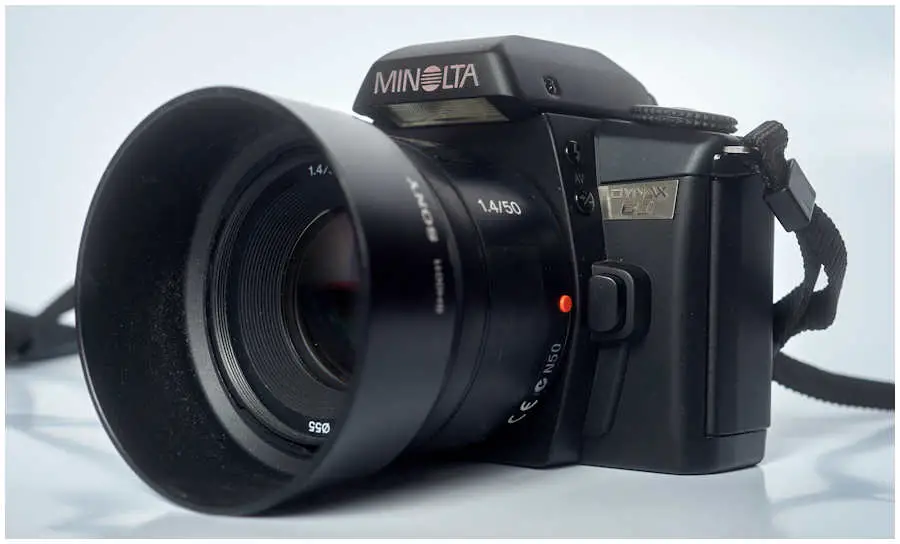
The Minolta Dynax 60
Now I’d like to move on to the very last Minolta, the a-70/Maxxum 70 – known in Europe as the Minolta Dynax 60 (I can only suppose that someone in Minolta Europe didn’t think the camera quite merited use of the hallowed ‘7’). I’m going to use the name Minolta Dynax 60, partly because I’m in Europe and the camera I’m using is a Dynax 60, but also because 60 seems to place the camera better. This camera is very similar to 5, but like the 600si, it gives us a dial for PASM selection.
The Minolta Dynax 60 appeared in 2004 and, along with the Dynax 30/40 (one camera, two names – logic would seem to have gone out of the window at some point) – known elsewhere as the a-50 and Maxxum 50, were the last Minolta 35mm SLRs.
While film was beyond making much of a bang in 2004, the Minolta Dynax 60 is a long way from a whimper, but Minolta Europe had a point. Like the 5, this is a camera made to a budget, perhaps more so than the 5. The changes from the 5 are largely ergonomic, with the addition of the PASM dial, a slightly larger grip and the deeper front dial, giving a bit better grip and purchase. There were cosmetic changes as well, with the finish being in black rather than chrome and the pentaprism housing the pop-up flash looking (to my eyes) a little less elegant – this last change may have been necessitated by the addition of a more powerful pop-up flash. To even things up a little, it has to be said that the 60 lacks some sophistications that came with the 5.
Comparing the 5 and 60
There is a possible misconception, aided by the model numbering in North America and the East that the 60 is a slightly cut down 7, but that mismanages expectations. In truth it is simply a different take on the 5. These are both great little cameras. The revised grip and wheel on the 60 are appreciated, but ergonomically it is not a one way street, as the integration of the ‘off’ switch on the PASM dial is less convenient than the well-placed on-off switch of the 5. While the clumsier pop-up implementation of the 60 makes it easier to catch and accidentally deploy the flash.
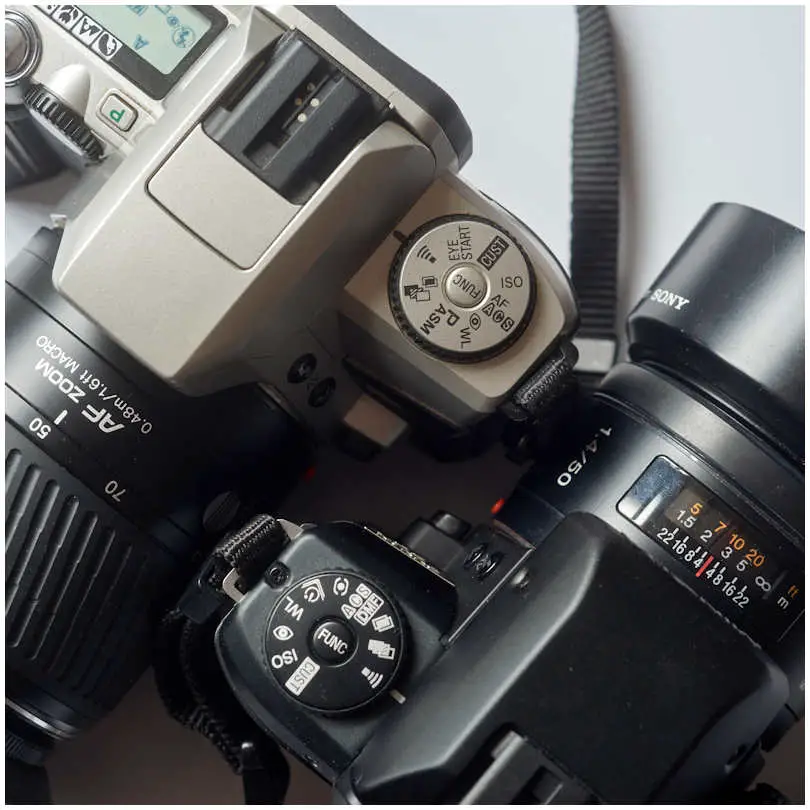
In comparison with the 5, the 60 loses:
- The eye-start and grip sensors
- 1/4000 shutter speed (maximum shutter speed is 1/2000)
- 1/125 x-synch speed (synch is at 1/90)
- A socket for a wired remote release (although it can use an IR remote)
In comparison to the 5, the 60 gains:
- Two focus points
- A redesigned grip and wider control dial
- A bigger pop-up flash (GN16 against GN12)
- A dioptre adjustment
- The DMF (direct Manual Focus) feature from the 7 – this uses the camera’s AF to give you a focus hit, then switches automatically to MF so you can manually fine tune if you wish.
Note that both cameras have the same safety feature on the film door as the 7 – designed to stop you opening the camera accidentally and wasting film. As with the 7, there is an ‘easter egg’ which allows you to disable the safety lock should you have a need to open the camera without the film being rewound. To disable the lock switch the camera off, set the function dial to ISO, hold down both the function dial button and the ‘spot’ or ‘AEL’ buttons (depending on model) and turn the camera on – this should disable the lock, which can be reapplied simply by repeating the same procedure.
Note that both cameras also use an IR sensor to count film sprockets, so neither camera is safe to use with IR film.
The cameras in use
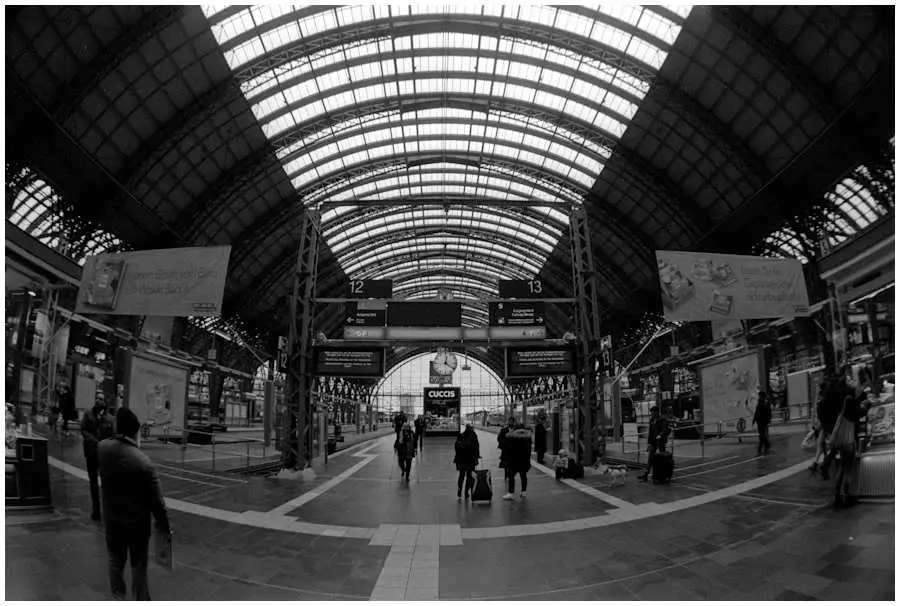
The revised camera design used on both these models is compact – both feel like ‘small’ cameras (which does not always appeal to everyone). Viewfinders are big and bright enough – not suffering too much from their pentaprism construction. There are adequate AF points. Some may find the grips too small in comparison to more modern DSLR cameras, but they fit the hand very well, and the thoughtful placement of the camera strap lugs means that a strap does not get in your way when gripping tha camera. The change to the vertical control wheel on the front surface of the camera takes a little getting used to, but it works well enough.
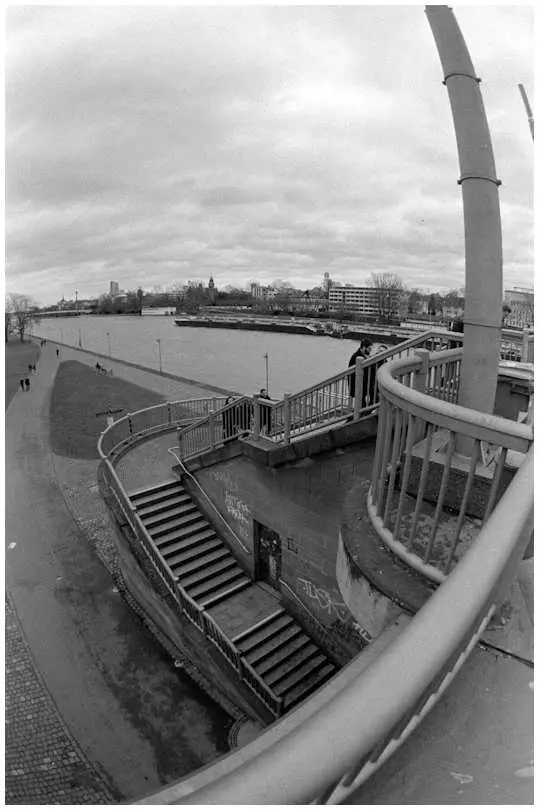
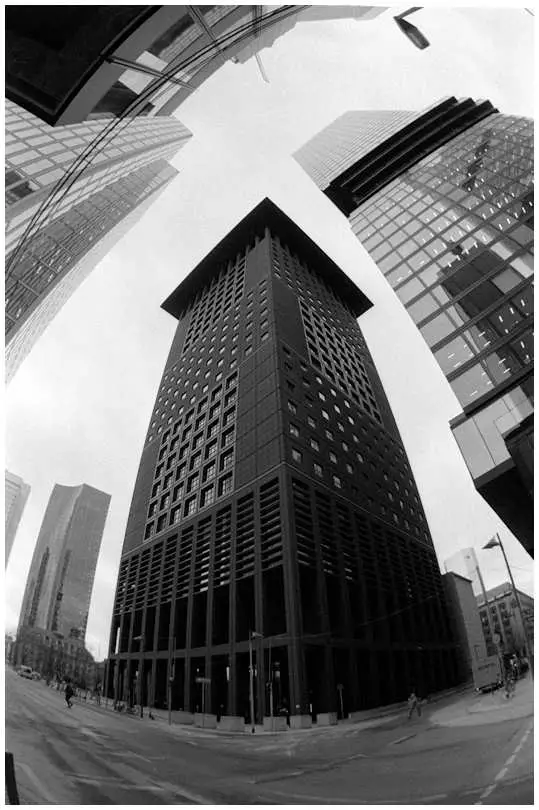
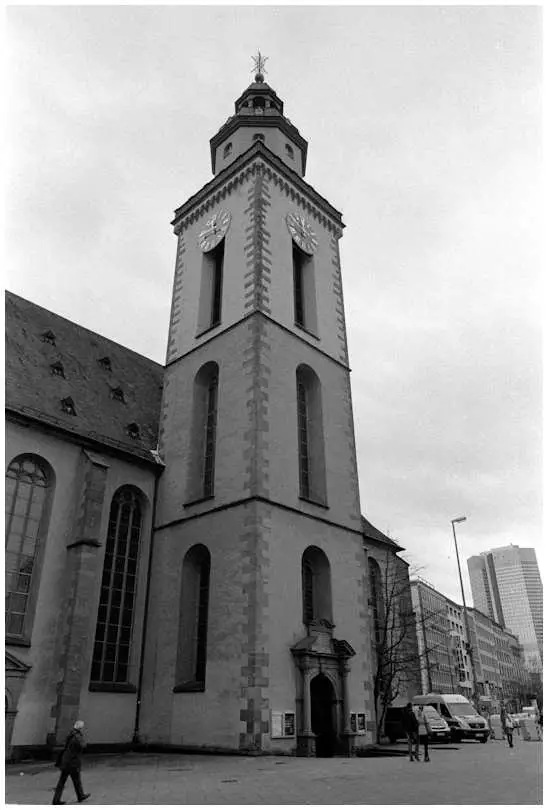
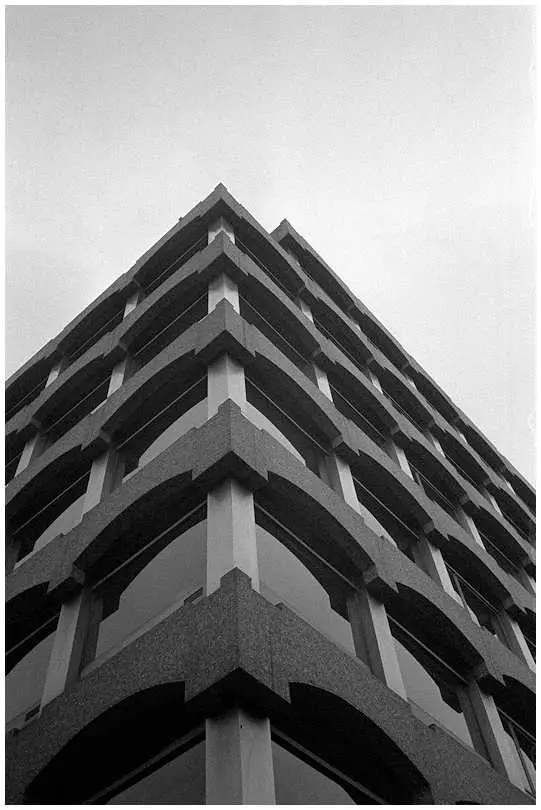
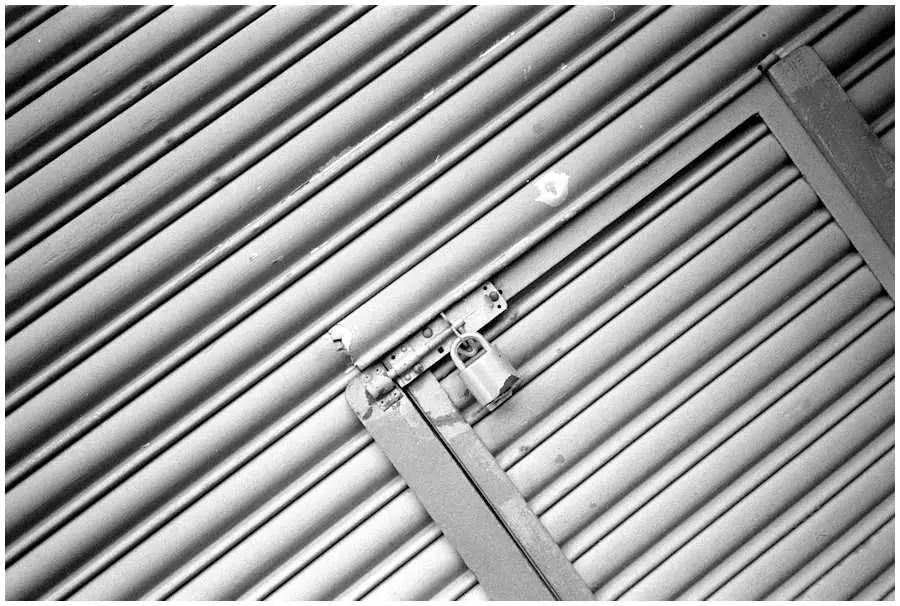
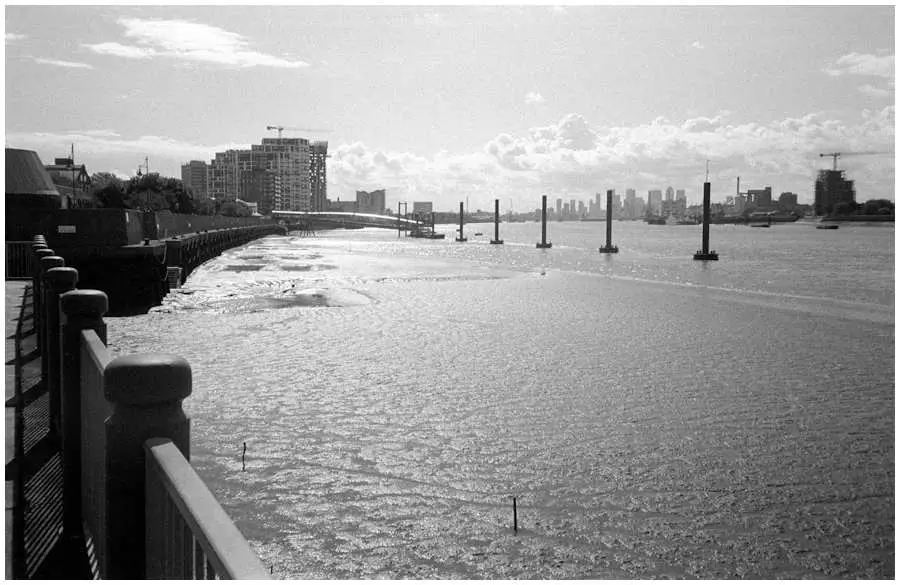
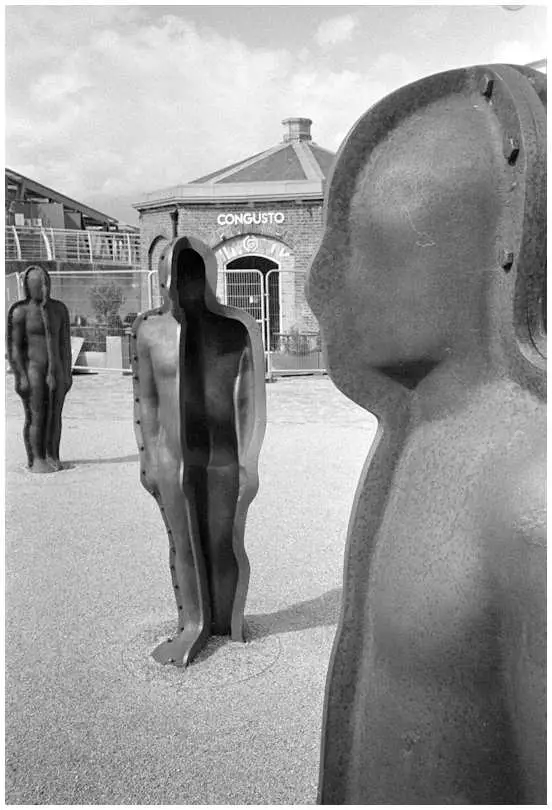
Compared to the top flight cameras you don’t get the fastest shutter speeds, but you still get at least 1/2000th of a second, a bright viewfinder, the ability to run any Minolta/Sony AF lens available in A mount and as much exposure automation as anyone could ever want to shake a stick at.
The bottom line
Both Minolta Dynax 5 and Dynax 60 are great little cameras with relatively minor pros and cons on both sides. If you have access to any Minolta or Sony AF glass, they are to be highly recommended.
Cosmetically (if you ignore the pop-up and the exposed screw heads) and ergonomically the 60 may edge it – certainly the likelihood is that such a late film SLR is likely to have seen far less use than the 2001 model, but neither model had long enough before being exiled to the back of the sock drawer by the advent of digital, so serious wear is unlikely to be a huge factor.
If there is nothing in the above comparison that is a deal breaker for you with regard to either model (and if there is you may need to consider if you are being a bit picky) I’d recommend either of them as a great, affordable little film camera and say to choose based on what is available at the best condition and price.
To view and compare full specs for any A-mount camera (analogue or digital) take a look at Michael Hohner’s highly informative knowledgebase pages available at https://www.mhohner.de/sony-minolta/bodies.php
Share this post:
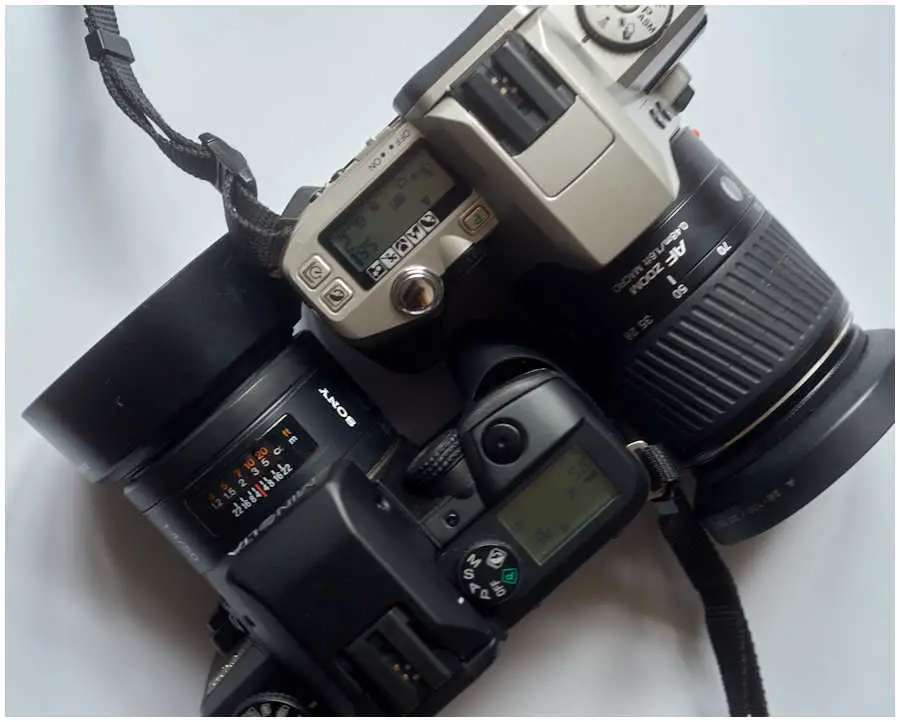








Comments
Kodachromeguy on Minolta Dynax 5 & Dynax 60 Review – Late Model Budget Gems – By Bob Janes
Comment posted: 02/10/2020
davesurrey on Minolta Dynax 5 & Dynax 60 Review – Late Model Budget Gems – By Bob Janes
Comment posted: 02/10/2020
I lusted after a Dynax 7 (I still do) but for that price and condition it was a no brainer.
So far I really like it and the wide range of lenses is a bonus.
Sometimes it’s good to get away from the Canon, Nikon, Pentax, Olympus SLRs and use something different. Minolta definitely had some good ideas.
Nathalie Porter on Minolta Dynax 5 & Dynax 60 Review – Late Model Budget Gems – By Bob Janes
Comment posted: 02/10/2020
Kurt Ingham on Minolta Dynax 5 & Dynax 60 Review – Late Model Budget Gems – By Bob Janes
Comment posted: 02/10/2020
I've been given 3 of these that don't work-1 that is fine.
Anecdotal to be sure, but it seems lots of electronics from this era haven't aged as well as some earlier and later vintages
Richard on Minolta Dynax 5 & Dynax 60 Review – Late Model Budget Gems – By Bob Janes
Comment posted: 06/11/2021
Comment posted: 06/11/2021
Gre Sullivan on Minolta Dynax 5 & Dynax 60 Review – Late Model Budget Gems – By Bob Janes
Comment posted: 09/02/2022
Hadi Azmi on Minolta Dynax 5 & Dynax 60 Review – Late Model Budget Gems – By Bob Janes
Comment posted: 24/07/2022
Enrico Nerozzi on Minolta Dynax 5 & Dynax 60 Review – Late Model Budget Gems – By Bob Janes
Comment posted: 07/01/2023
Comment posted: 07/01/2023
Ibraar Hussain on Minolta Dynax 5 & Dynax 60 Review – Late Model Budget Gems – By Bob Janes
Comment posted: 14/04/2024
I had both of these once upon a time.
Now I’ve the 7. The 7 is so cheap nowadays but I find the 5 to be a nice light small backup
I wasn’t too impressed with the 60